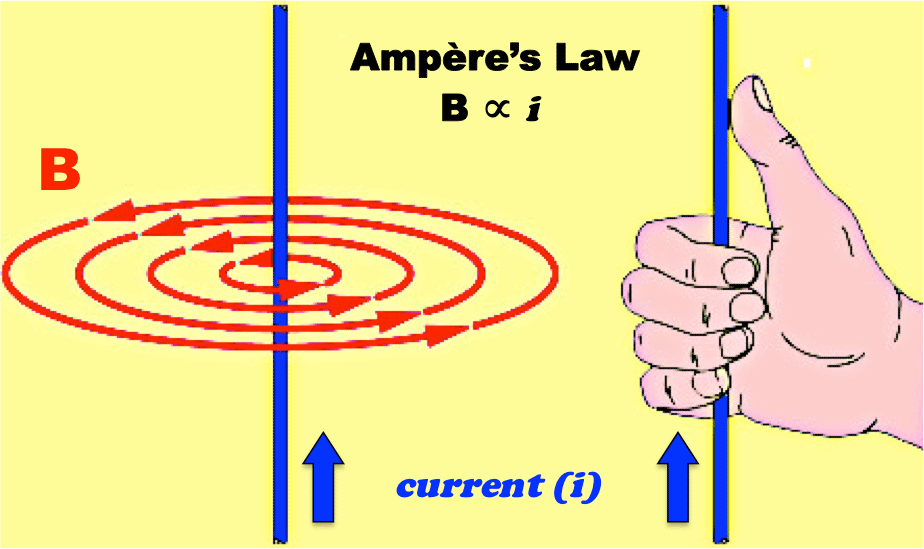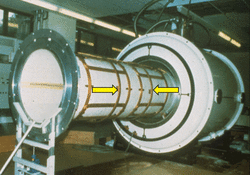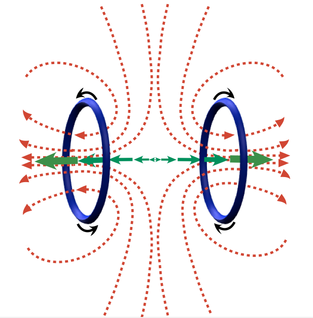|
The direction and magnitude of gradient fields can be appreciated by using two basic principles of classic electromagnetism -- Ampère's Law and the right-hand rule. The strength of the gradient field is directly related to the current sent through the gradient coils. The direction of the gradient field is predicted by grasping (in your imagination!) the gradient coil with your right hand and letting your thumb point along the path of the current.
|
|
In all MR scanners the z-gradient is produced using two coils carrying current in opposite directions as shown in the diagram to the below. This is known as a Maxwell coil configuration. Maxwell coils produce an incremental field that is zero at magnet isocenter but increases linearly outward in both the +z and -z directions. When this is added to the constant (Bo) field, the result is a gradually increasing field along the z-axis. |
Advanced Discussion (show/hide)»
A few additional notes on the Maxwell coil pair:
The Maxwell pair is a variation of another 2-coil arrangement you have already seen -- the Helmholtz coil. In the Helmholtz configuration, the current in the two coils is in the same direction, whereas the currents flow in opposite directions with Maxwell coils. Helmholtz coils are used to generate the homogenous main magnetic field (Bo), while Maxwell coils are used to generate the z-gradient field (Gz).
Maxwell coil configurations are also used to generate the Z2 harmonic for second order shimming.
For maximum efficiency the distance between the coils of the Maxwell pair should be spaced at √3 (=1.73) times the coil radius (r). This spacing eliminates unwanted odd spherical harmonic terms such as Z3 and Z(X2+Y2). The gradient produced is uniform to the 5% level within a sphere of radius r/2 at the center of the coil. Gradient linearity also falls off sharply at spherical radii exceeding r/2.
The Maxwell pair coils are used to produce the z-gradient for vertical field (open) scanners as well as for horizontal field (cylindrical) ones. Transverse (x- and y-) gradient configurations are somewhat different between the two scanner configurations, however.
Hidalgo-Tabon SS. Theory of gradient coil design methods for magnetic resonance imaging. Concepts Mag Res Part A 2001; 36A:223-242.
Poole M. Improved Equipment and Techniques for Dynamic Shimming in High Field MRI. PhD Thesis, University of Nottingham, 2007. (see especially Appendix A1. Table of coil properties on p 183).
What causes magnetism?
What are gradient coils?
How do you make transverse (x- and y-direction) gradients?




